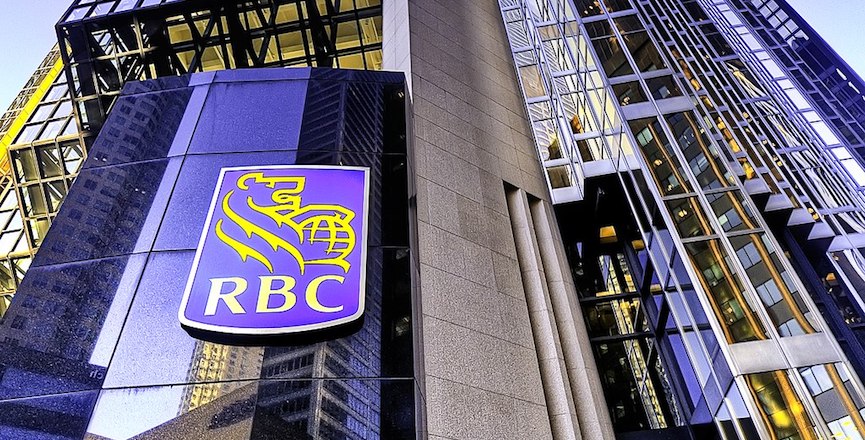Strange how some people think Canada is a colony, a victim of U.S. power, when so much evidence points to the Great White North being an imperial power.
For example, Canada is an international banking powerhouse.
The Globe and Mail report on TD’s third-quarter results noted that its “international operations — mostly in the United States and Latin America — produced outsized returns” while another recent story in that paper’s business pages pointed out that the Bank of Nova Scotia and Bank of Montreal “are doing brisk business lending in international markets, helping drive third-quarter profits higher.” For the Royal Bank of Canada (RBC), Canada’s biggest bank, the Financial Post reported that “U.S. wealth management helps propel RBC to $3.1 billion profit.”
Canada’s international banking prowess is not new. Dating to the 1830s, Canadian banks had become major players in the English Caribbean colonies and U.S.-dominated Cuba by the early 1900s.
RBC began operating in Britain’s Caribbean colonies in the late 1800s, and had branches there before the bank opened any in western Canada. During the occupation of Cuba (1898-1902), RBC was the preferred banker of U.S. officials. (National U.S. banks were forbidden from establishing foreign branches until 1914.)
By the mid-1920s, the “Banco de Canada” as it was popularly known, had 65 branches in Cuba. In 1919, RBC established an association with the Westminster Bank, which had operations in British Africa. In 1925, RBC published an ad in Canadian magazines with a map of the Western Hemisphere depicting denoting the bank’s presence throughout the Caribbean and South America. The headline read, “A bank with 900 branches: at home and abroad.”
The Bank of Montreal has operated in the Caribbean since the late 1800s, tied to British rule there and in Africa. According to James L. Darroch in Canadian Banks and Global Competitiveness, “in 1920, a substantial interest in the Colonial Bank was purchased [by the Bank of Montreal] to fill out the branch network and to provide representation in the West Indies and West Africa.”
The Canadian Imperial Bank of Commerce (CIBC) entered the Caribbean just after World War One and Mexico a bit earlier. According to Darroch, “the CIBC acted for the U.S. government after the U.S. came into possession of the Philippines following the Spanish-American war” in 1898.
Scotiabank has “full-service banking operations in 37 countries.” It set up shop in British controlled Jamaica in 1889, U.S.-dominated Philippines a few years later, and the Dominican Republic during the U.S. occupation of 1916-1924.
With operations spanning the globe, Canadian banks are major international players. The five major Canadian banks are among the world’s 59 biggest banks. At 0.5 per cent of the world’s population, Canada should have one of the world’s top 200 banks. To put it differently, this country’s proportion of the world’s 59 biggest banks is more than 15 times the share of Canada’s global population.
Canada’s outsized banking power is not new. In 1960, three of the world’s twelve biggest banks were Canadian and Canadian banks oversaw 15 per cent of the international foreign currency market.
Similarly, Canada’s big five banks have long generated a significant share of their sizable profits from their international operations. In 1981, a Bank of Nova Scotia executive said, according to Walter Stewart in Towers of Gold, Feet of Clay: The Canadian Banks, “I don’t know why Canadians are upset about bank profits. We’ve stopped screwing Canadians. Now we’re screwing foreigners.”
Foreigners have protested Canadian banks for at least a century. CIBC and the Bank of Montreal were targeted during the Mexican Revolution (1910-1917) and there’s been publicly recorded criticism of Canadian banking practices in the Caribbean since at least 1925. In the early 1970s, Canadian banks were fire bombed in nationalist protests in Trinidad and Tobago and Scotiabank was targeted by demonstrators and the courts in Argentina at the start of the 2000s.
Amazingly, the Canadian left has generally ignored Canada’s international banking prowess — even as their foreign operations receive direct government assistance. The dominant left nationalist political economy perspective frames Canada as a victim of international capitalism. Looking at the world through a left nationalist lens generally leads individuals to ignore, or downplay, the destruction wrought by Canadian corporations abroad and “Canada’s hugely privileged place in the world economy,” as Paul Kellogg puts it in Escape from the Staple Trap: Canadian Political Economy after Left Nationalism.
Canadian banks have amassed significant wealth through their domestic operations and relationship to the profits generated from Tim Hortons workers, Inuit resources, oil extraction, etc. But, they’ve also made huge sums internationally and by skimming some of the wealth produced in U.S. oil fields, Peruvian mines and Port-au-Prince sweatshops.
People on the left should tell it like it is: Canada is an imperial power, our ruling class profits greatly from the exploitation of poorer countries.
Image: Wikimedia Commons
Like this article? rabble is reader-supported journalism.





